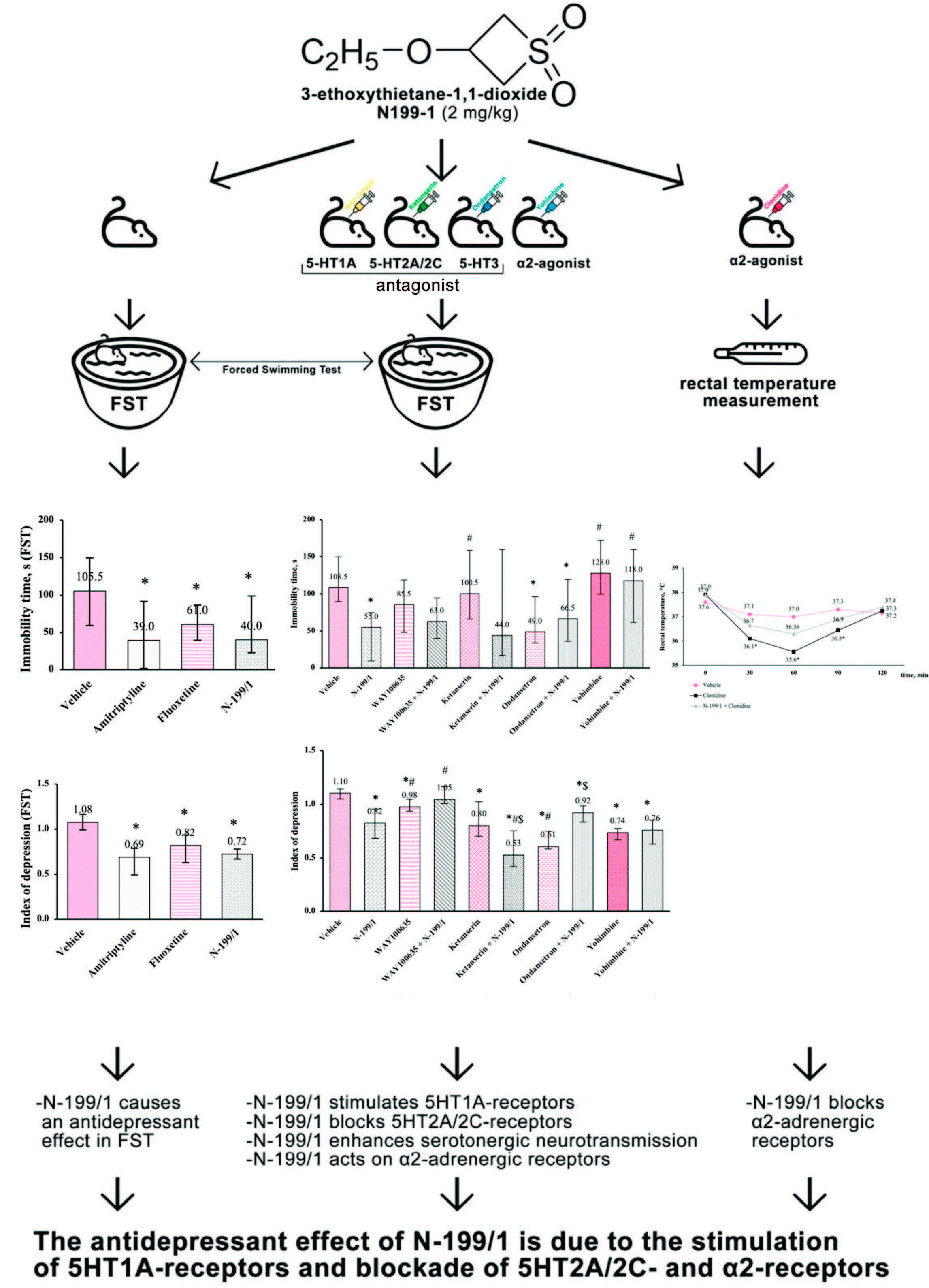Involvement of monoaminergic system in the antidepressant effect of 3-substituted thietane-1,1-dioxide derivative
DOI:
https://doi.org/10.3897/rrpharmacology.8.81007Abstract
Introduction: The aim of the study was to assess the involvement of the monoaminergic system in the antidepressant effect of a new 3-substituted thietane-1,1-dioxide derivative (N-199/1) using tests with several pharmacological antagonists and agonists.
Materials and methods: We conducted 3 sets of experiments in white outbred male mice. In Experiment 1, we assessed the antidepressant effect of N-199/1 in the forced swimming test (FST) and tail suspension test (TST) when administered repeatedly for 2 weeks intraperitoneally (i.p.). In Experiment 2, we evaluated the antidepressant effect of N-199/1 in FST and TST when co-administered with 5HT1A- (WAY100635, 0.1 mg/kg), 5HT2A/2C- (ketanserin, 5 mg/kg), 5HT3- (ondansetron, 1 mg/kg) serotonergic and α2-adrenergic (yohimbine, 1 mg/kg) receptors antagonists. In Experiment 3, we assessed the effect of N-199/1 on the hypothermia induced by i.p. injection of α2-adrenergic receptors agonist clonidine (0.3 mg/kg).
Results and discussion: N-199/1 reduced immobility time (IT) and index of depression (ID) in FST, and did not affect IT in TST, either when administered repeatedly in Experiment 1, or acutely in Experiment 2. In Experiment 2, ketanserin enhanced the effect of N-199/1, decreasing ID by 36%, while WAY100635 and yohimbine antagonized it, increasing ID by 27% and IT by 115%, respectively, in comparison with N-199/1. N-199/1 attenuated the effect of ondansetron, increasing IT by 36%. In Experiment, 3 N-199/1 reduced clonidine-induced hypothermia 1 h after the injection of clonidine. N-199/1 exhibited pronounced antidepressant properties in FST, an agonism to 5HT1A-receptors and an antagonism to 5HT2A/2C- and α2-receptors in tests of neuropharmacological interaction, which indicates an atypical mechanism of its antidepressant action.
Conclusion: The antidepressant effect of N-199/1 is due to the stimulation of 5HT1A-receptors and blockade of 5HT2A/2C- and α2-receptors.
Graphical abstract:
 Русский
Русский
 English
English

